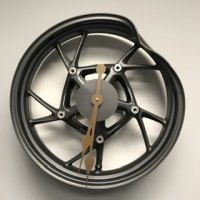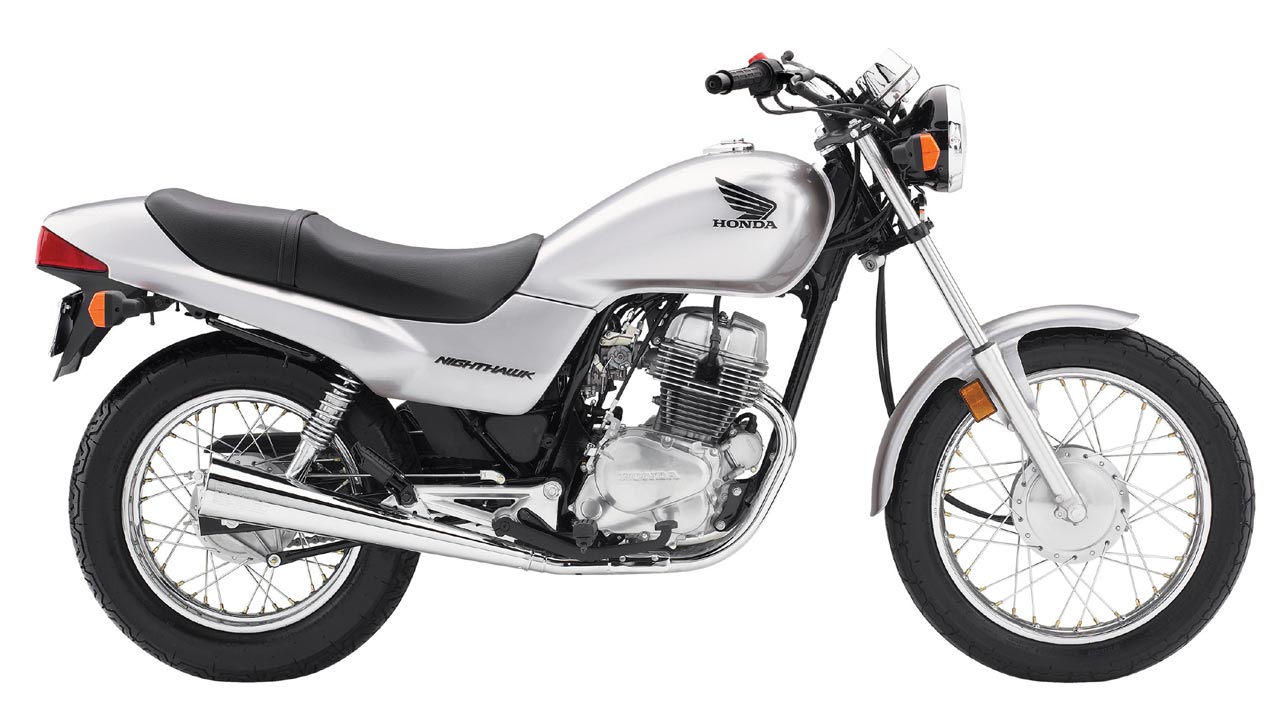-
Posts
25,252 -
Joined
-
Days Won
34
Content Type
Profiles
Forums
Gallery
Events
Everything posted by Zero Knievel
-
Thanks. The red light came on with the charger...twice. Tests at under 4 volts. It's toast. The Big Crank ($60) was just a bit more than what Wal-Mart charged (excluding shipping), so I'll give it a shot and see how it does. Yuasa was almost $90.
-
A quick question. Got my Wal-Mart battery just under 2 years ago. Yesterday, it didn't have the juice to crank. It's on the trickle charger now. I went out on the XX a few weeks back....not so far back that the battery didn't get some decent charge time. I wonder if it's dying on me so early. Keeping in mind that now I'm running the HID lights, how long does a TYPICAL batter last? I opened up this one and noticed the fluid levels were low, so I topped them off with RO water and then put it on the charger. Don't need a battery dying on me when on the road. I know how the starter sounds when the battery is dying, and I have noticed that it's taking longer to crank than when the battery was brand new. I know, "When in doubt...." but I don't want to shell out more $$$ for a fancy-brand battery if it's going to last maybe 1 year longer than Wal-Mart's did. So.... 1. How long does a typical M/C battery last? I thought it was 3 years, but it sounds like some are lucky to get a good 2 years? 2. For the amount you pay, which brand/supplier should I go with, or is Wal-Mart good enough when you consider price and duration?
-
I suppose at 70K+ it's time to have it done. I am debating taking the bike to a mechanic who is trustworthy and paying for it to be done or do it myself. If I do it myself, what's needed to do the job? Parts (e.g., gaskets) that need to be replaced?
-
I got as far as ABS before I was distracted by your avatar.
-
Now there it is. If he can go 160,000 miles (and still going) on car oil, why worry about it? The question is what condition his motor is in ON THE INSIDE. Lots of decent oils will let a motor go over 100K, but some do a lot more protection to the inner workings than others. The more you protect the inside (not just friction reduction), the longer your motor will last...period.
-
Aside from POS bulbs being the issue, I always clean bulbs with rubbing alcohol before installing. Even if I don't touch them. Just to be safe.
-
Generic car oil = bad. For a long time, a lot of bad stuff was allowed in common oil that made going full-synthetic (regardless of maker) a smart move. Today, I'm not sure what to say. Full-synthetic car oil would likely do fine for motorcycles. I still prefer my AMSOIL, but I run AMSOIL in my truck as well. I'd not use common car oil in any performance motorcycle motor....just for the issue of how well it'd handle the stress or some of the additives not being good for the long-term health of the motor.
-
+1 Maybe on other bikes that leave some room for play, but the XX everything is so packed in tight that you don't have any guess work. It fits or it doesn't, and if you have extra space, something's not right. When I put in the VFR bars, I had to tap the triple tree down 1/8" so the deeper clamps on the bars would clear the circlip groove on the tubes.
-
http://www.dual-star.com/index2/Rider/heated_grip_kit.htm Google is your friend. They list the recommended adhesive.
-

A-style T-shirt size large
Zero Knievel replied to The Krypt Keeper's topic in The Sales Floor -- For Sale/Wanted
Christmas shopping....done. PM sent. -

Shotgun & Pistol 4 Sale (Price Drop)
Zero Knievel replied to DaveK's topic in The Sales Floor -- For Sale/Wanted
For local sales you might be correct, but for sales to those in other states an FFL must do the transfer. BS, but it's the law. Additionally, the seller of a firearm may make any condition to transfer they see fit: copy of your driver's license, concealed pistol permit, etc. I suspect in New York it is even more strict. Out here in the Wild West I typically meet someone in a grocery store parking lot. It feels a lot like a dope deal. That's how it is here. If you're from another state, doesn't matter. A private sale is not subject to regulation unless it's a Class 3 firearm. -

Shotgun & Pistol 4 Sale (Price Drop)
Zero Knievel replied to DaveK's topic in The Sales Floor -- For Sale/Wanted
You shouldn't need a FFL unless buying from a dealer. Person to person transactions don't need a FFL...last I checked....or is this a Gestapo NY state thing? -
If you're 150, the stock springs should be more than adequate. Us heavier folk need better springs because most all bikes are designed with a 160 lb rider in mind. Install a Datel voltmeter to monitor the electrical system. A stator should pretty much never go bad for no reason at all. The regulator/rectifier is the more obvious culprit and a voltmeter will keep you informed of it's proper function at a glance. I just hit 70K and replaced the cam chain tensioner, so you can look forward to that sometime in the future.
-

Shotgun & Pistol 4 Sale (Price Drop)
Zero Knievel replied to DaveK's topic in The Sales Floor -- For Sale/Wanted
For clarification, which shotgun in that pic? Top or bottom? Also, what "legal" stuff do you need for the sale? -
These embarrassing moments are about the only social life I have left.
-
Great advice, except he's not running Honda bars. Ah, I saw the XX and presumed he had the Honda bars on it. Didn't know about the heli bars. I just went with VFR800 bars instead...Honda equipment transferred right over.
-
For the most part, bar ends should be bar ends, but Hondas have that funky connection end to keep them from spinning once installed. You could probably get any number of compatible Honda bar ends from eBay or MC salvage yards.
-

Shotgun & Pistol 4 Sale (Price Drop)
Zero Knievel replied to DaveK's topic in The Sales Floor -- For Sale/Wanted
I'd jump on it in a heatbeat, but I need to handle a weapon to know if it's right for me. Great deal though. Too bad you're not closer. -
Just got back from Deal's Gap, and an odd thing happened there. Got back one evening to the hotel. When I went out to check the bike, the inside of the headlamp was fogged with moisture. Cranked up the bike, turned on both bulbs, cooked off the moisture. Turn it off and the fog comes back. In the morning, lamps are crystal clear. I can tell that this moisture is "trapped" inside the assembly, but is this normal? I never saw it happen with my regular bulbs. Yes, it was cool to cold and damp outside after the day's ride.
-
My guess is that military applications don't need the range of illumination that civilian cars require, so the LEDs are more than adequate. Didn't the military use to mask off a good part of headlamps years ago for vehicles in the field?
-
Been using Amsoil since about 1999....no problems, extended drain intervals, superior cleaning and protection. Change the truck's oil in Summer. Change the XX in winter. Do 6-month filter changes on the truck.
-
Ummmm you might wanna take a look at the pic again...passenger pegs are in place and folded up. JC Whitney motorcycle luggage and accessories Would be easy to adapt several of these boxes to a NightHawk. Ah. It appears eyes was one of the first two things to go.
-
Nice, but fairly pointless. It's just a metal rack. Something you might bungee to, but not quite enough. Wonder if there are cases that work with it.
-
Thank you. I did a double-look at the photo. My mind is the third thing to go. I forget what the first two were. Still, the Nighthawk has no pegs for the pillion, so the rider pegs are too far forward to mount onto.
-
I know this isn't a XX topic, but if anyone is in the know.... Dad has his 250 Nighthawk. Likes the idea of my Givi top case (or a similar product). Givi has no listed mounting options for the 250 Nighthawk. I can see why. Two good mounting points on the rear pillion (at the turn signals), but you really need at least 3, optimally 4. The XX uses the grab rail bolts and the exhaust pipe mounts. The Nighthawk mounts the exhaust pipes to the swingarm which makes them movable, not fixed. Any suggestions on what might work for this type of bike? Pic so you have an idea....


